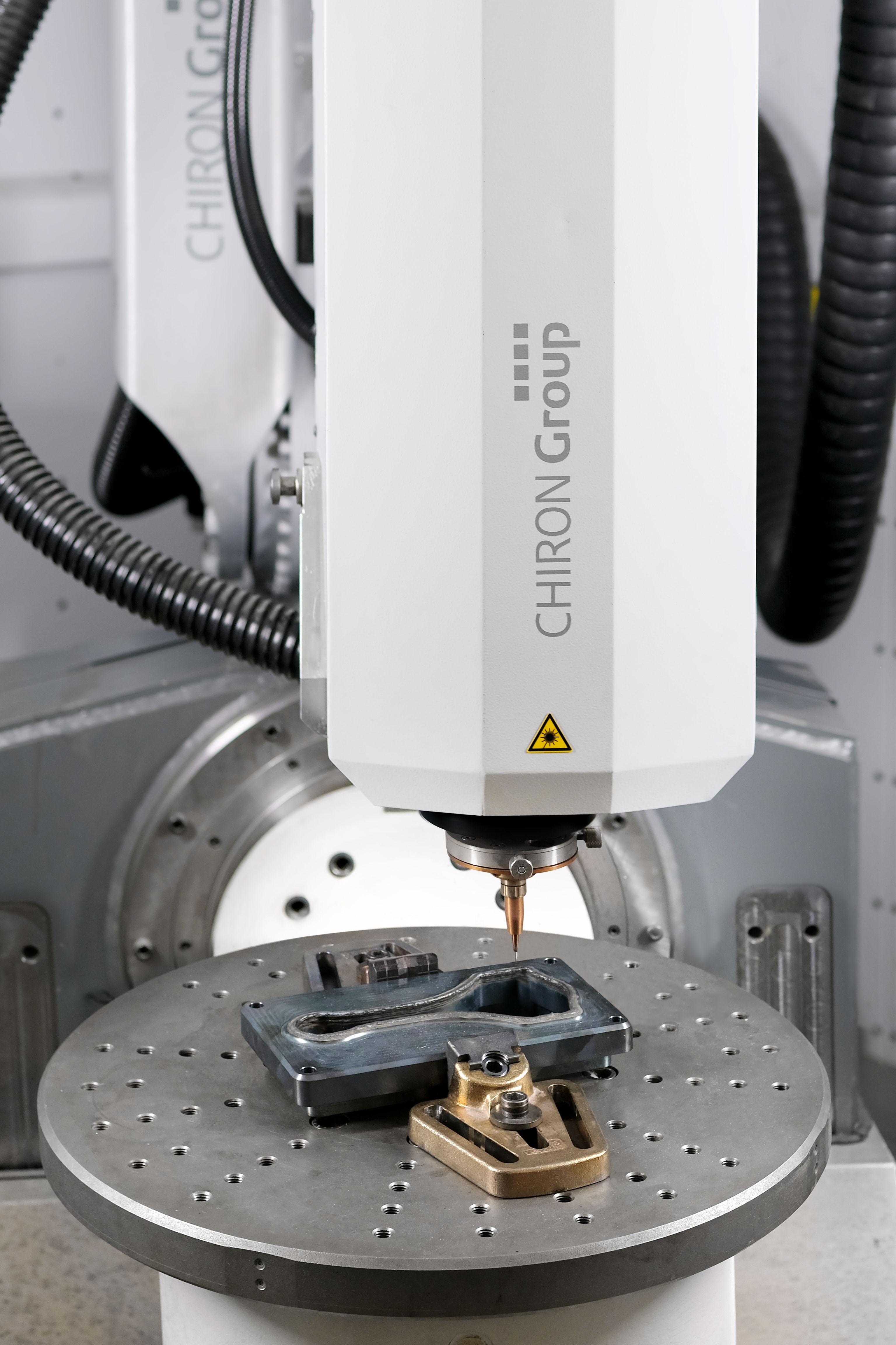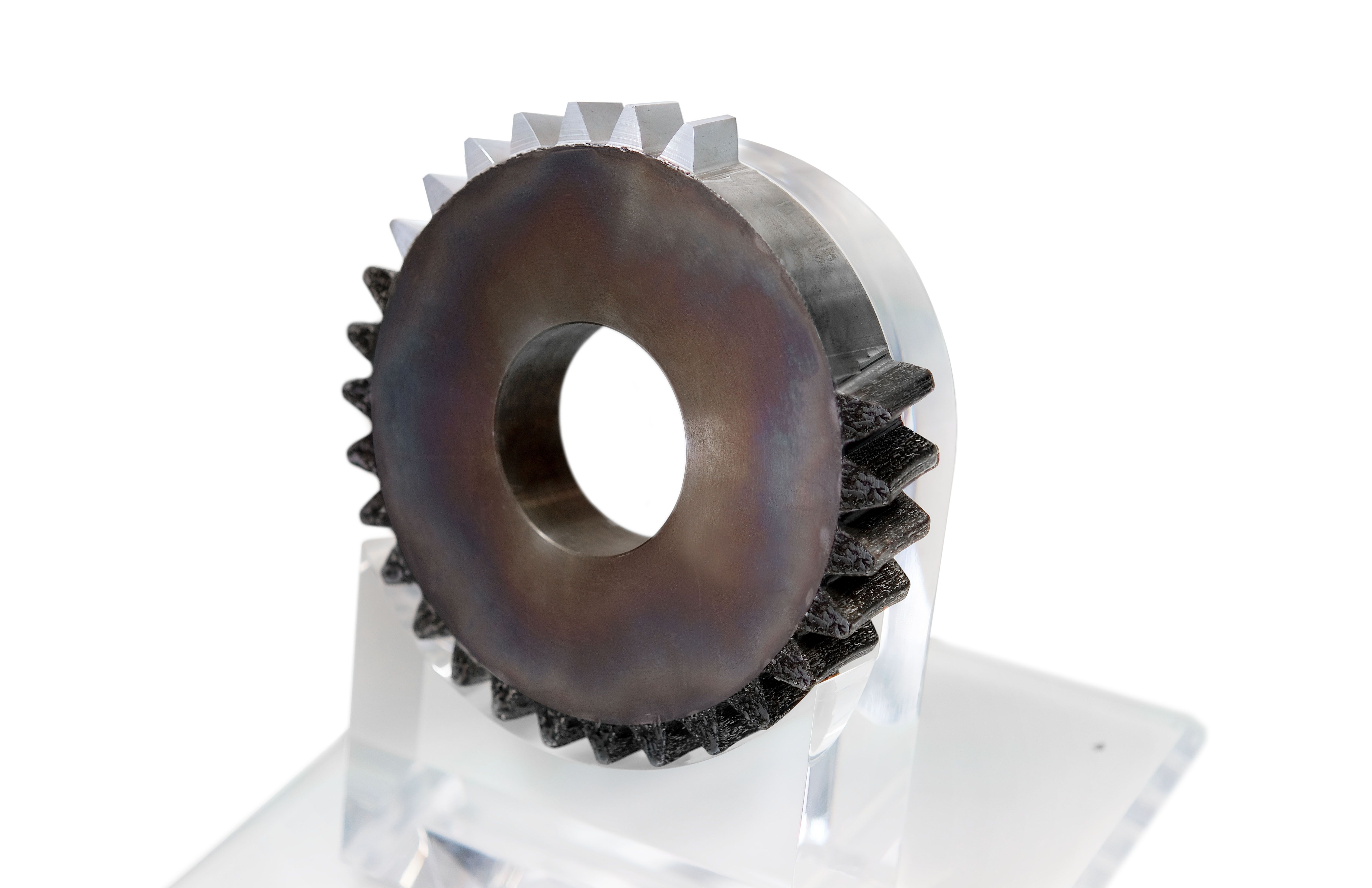Repair, don't make new! With automated LMD
30日 五月 2022
In terms of economical and ecological sustainability, this appeal is absolutely relevant and future-oriented. When it comes to repairing molds and components instead of making new ones, Laser Metal Deposition/LMD is a proven key technology – with growing potential for new fields of application. The „reFORM“ workshop at the CHIRON Group OPEN HOUSE 2022 focused on the automation of LMD repair processes. And one thing became clear: it's not that easy. But if you are able to implement it, you will gain time, save costs and - operate extremely sustainably.
In reality, it is similar to machining, only that the LMD works the other way round. Instead of removing material, it applies it. Using powder or wire, or both in combination. What is feed rate and cutting depth for one is deposition rate and layer thickness for the other. Where one cools the workpiece, the other heats it up. Either way, at the end of the day, the component must be produced to the required quality and cost efficiency – with the increasingly weighty additional criteria of energy sustainability and low use of resources.
LMD process technology – automated repair work
A wealth of expertise was represented at the CHIRON Group „reFORM“ workshop in Tuttlingen, Germany, talking about the requirements for and possibilities of automated LMD processes. Cedric Bardenhagen, Key Account Manager at Siemens AG gave a clear impression of the motivation for meeting this challenge as he gave his talk on programming additive production processes: A newly manufactured gear wheel with a diameter of 500 mm and weighing 230 kg required just under 2,000 kW/h in its entire production chain. 90 percent of the energy is required for steel production and forging the mold, the remaining ten percent for machining and post-treatment. In comparison, a gear wheel made from recycled steel consumes „only" 39 percent of the production energy. Now, if you repair such a wheel with an automated LMD process, you will require only 17 percent of the amount of energy of a new wheel, or 42 percent of a recycled wheel, to use this restored component to put a wind turbine (for example) back into operation. In short: Repairing with additive manufacturing is extremely positive for your climate footprint!
Materials and welding – that's science
But first, we go right back to the beginning of the process, the origin. And it always starts with the material. In general, heat-resistant chrome steels are used for molds and tools. The stresses that a forming tool is subjected to can vary greatly. Whether it is a welding tool for the manufacture of a generator shaft with a dead weight of 250 tons or a cone roll for the production of seamless rings - some of the occurring stresses are fundamentally different. Dr. Michael Nolde, member of the management board at Capilla Schweißmaterialien GmbH, demonstrated this impressively, using the example of a fully automated forging plant, from the forging blank to the finished part. In order to make the mold and tool more wear-resistant, protective layers of iron, cobalt or nickel alloys are applied using various welding processes. What needs to be considered in terms of material and process technology, when manufacturing new tools, but also when repairing them when worn (e.g. breakouts and worn punching surfaces), is a science in itself. However, this is the only way to achieve good mold and tool quality - the result is long service lives. At best, they even exceed the service life of new, non-welded forge dies. Understanding this is essential for the successful implementation of automated LMD processes. The 30 or so workshop participants really felt those 40 years of experience.
Multi-functional system for automated LMD process – AM Cube 3D metal printer proves itself in practice
The Additive Manufacturing team from the CHIRON Group, the hosts of the workshop, used this highly specialized knowledge about material properties in welding processes to develop the AM Cube. With the wide variety of materials available today, the flexibility of the system is an important criterion for an automated LMD process: So many shapes and contours, so many materials are used in everyday practice, it makes sense for the system to have deposition heads that can be changed easily and quickly – it is possible to have up to three. Sometimes powder is the preferred weld material, sometimes wire - the user has all the options.
Dominik Hipp, Head of Toolmaking at Hammerwerk Fridingen GmbH, is one such user, responsible for the production of dies and tools in order to be able to guarantee a daily tonnage of around 200 tons. Together with the CHIRON Group, he is working on several projects, including the repair of cutting rings. "Automated welding on the AM Cube satisfies our quality requirements and increases service life by a factor of 2.5 to 3." Hipp reports in his presentation. „Another decisive factor in automating LMD repairs was the fact that there are hardly any skilled workers left for manual welding. Now that the automated process is in place, it is important to familiarize the employees with the automated LMD process and get them excited about it so that we can repair even more molds in future, thus improving our products and our climate footprint,“ says Dominik Hipp.
Data is everything – basic knowledge, control and digital systems combined
„Process control and data effectiveness are a must for automated LMD solutions“, Till Oeschger, Project Manager AM Cube at the CHIRON Group, is convinced. Why he thinks this way - why he has to think this way - is demonstrated very clearly in the highly impressive presentation by Prof. Dr. Hadi Mozaffari-Jovein, Materials Scientist at the University of Furtwangen. What the workshop participants recognized in the talk was the complexity of the topic: from the physical, chemical and mechanical requirements of tools and materials to buildup welding for graded alloys. There are many factors that come together. This ultimately also includes parameters and data that must be used in the construction of the component in order to make automated LMD processes safe and reproducible.
These data are valuable on several levels. With Siemens NX CAM, the machining processes can be conveniently programmed with the system and workpiece data and simulated in advance with the help of the digital twin. An error-free and already optimized program can be transferred to the system 1:1. „The time required for the CAD/CAM programming for a cutting ring is a good 90 minutes and that's fast,“ emphasizes Quentin Leibinger, Application Engineer AM at the CHIRON Group. Data also play an important role when machining on the real machine. All relevant process data are recorded via two new digital systems from the CHIRON Group: Firstly, DataLine AM means that all relevant process data can be displayed, recorded and documented in a compact quality report, continuously and in real time. This allows product and process quality to be assessed with certainty. VisioLine AM visualizes and saves video files recorded by multiple camera systems. Once parameters and tolerances have been entered, they serve as reference data and in the event of any deviations, you can take immediate, targeted action. A big plus for the worker. Leibinger and Oeschger agree: the continuous collection and analysis of data helps enormously to define the ideal process.
Ultimately, it is a turnkey solution – press a button and start
If you want a summary for the workshop, then this is it: the motto „Repair, don't make new!“ with automated laser metal deposition is certainly not an easy process to implement. However, just as with the machining process, technology partnerships, expert knowledge with a finger on the pulse of practice and, ultimately, experience from joint projects, lead to new, innovative solutions. The results and knowledge gained from the workshop give justifiable reasons to do so. In terms of sustainability, a very good outlook.






About the CHIRON Group
The CHIRON Group, headquartered in Tuttlingen, Germany is a global company specializing in CNC vertical milling and mill-turn machining centers, as well as turnkey and automation solutions. Comprehensive services, digital solutions and products for additive manufacturing complete the portfolio. The Group has a global presence, with production and development sites, sales and service subsidiaries, and sales agencies worldwide. Around two thirds of machines and solutions that are sold are exported. Key customer sectors are the automotive, mechanical engineering, medicine and precision engineering, aerospace industries, as well as tool manufacturing.
The CHIRON Group is proprietor of the CHIRON, STAMA and FACTORY5 brands for new machines, as well as the automation brand GREIDENWEIS and the retrofit brand CMS. CHIRON's machining centers are renowned for their highly dynamic design and their precision. STAMA's focus is on stability and complete machining, while FACTORY5's expert area is high-speed machining of micro-technical components. GREIDENWEIS is a system partner for custom, end-to-end automation solutions, and CMS provides completely overhauled machines from the Group. The final core area of expertise in the CHIRON Group is in additive manufacturing products and solutions.
Contact person for editors:
CHIRON Group SE
Melanie Buschle
Kreuzstraße 75, 78532 Tuttlingen, Germany
Phone: +49 7461 940-3255
Mail: melanie.buschle@chiron-group.com
